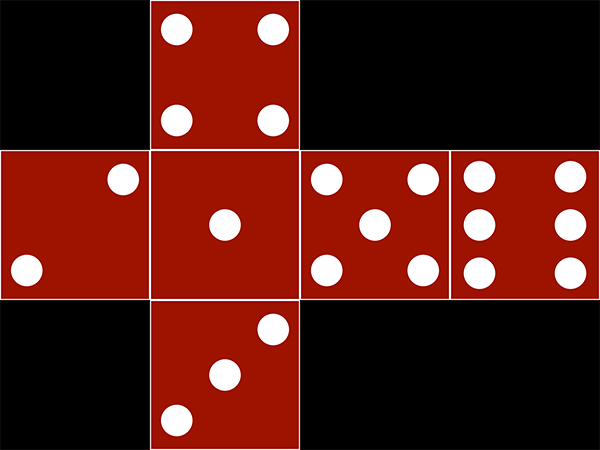
Casino Dice Schematics: Why Do So Many Get This Wrong?
Look, I love dice. You love dice. If you're here reading this, you probably really love dice — or at least pretend to when you sidle up to a craps table and toss around phrases like “Yo-leven” and “horn-high ace-deuce.” But there's one thing that drives me absolutely nuts…
Bad dice drawings.
I'm not talking about casual mistakes from a toddler sketching a six-sided cube. I'm talking about full-grown adults — dice enthusiasts, even casino artists! — who somehow can't follow the very basic, universal standards that even the junky plastic dice in a Monopoly box respect.
So let's set the record straight. If you're going to draw dice, design dice, photograph dice, or plaster them all over your gambling-themed products, you should at least know what actual casino dice are supposed to look like.
The Sacred Rules of Casino Dice
Here's what you need to understand:
Real casino dice aren't just random cubes with dots slapped on them. They're precision instruments, machined to perfection, and they always follow these basic principles:
🎲 1️⃣ The opposite sides always add up to 7
This is not a suggestion. It's math.
 should be opposite of
should be opposite of
 .
.
 should be opposite of
should be opposite of
 .
.
 should be opposite of
should be opposite of
 .
.
Simple and universal. If your drawing has 3 and 4 on adjacent sides, congratulations, you've created some kind of cursed object that belongs in a dollar store.

🎲 2️⃣ The 1, 2, and 3 all meet at a common corner
On a standard die, there's always one corner where you can see the
 ,
,
 , and
, and
 faces touching. It's the easiest way to orient yourself and the surest way to
spot a malformed imposter.
faces touching. It's the easiest way to orient yourself and the surest way to
spot a malformed imposter.
ALSO, the
 and the
and the
 should form a "V" when you look at the two shared faces with the
should form a "V" when you look at the two shared faces with the
 on top. When oriented like this,
the
on top. When oriented like this,
the
 should be on the left, and the
should be on the left, and the
 should be on the right.
should be on the right.
This means that the corner that the three faces share does not contain a pip. I learned this when I was 8 years old and I noticed that if you spin a die with that corner on top, the corner will be free of any pip.
Just look at the Game Die Emoji! They actually got this one right (if you ignore the color of the 1 Pip).
🎲
🎲 3️⃣ The 6 face has a specific orientation
It goes "up and down," meaning if you're looking at a properly aligned die,
the rows of three dots on the
 face run vertically, with the
face run vertically, with the
 and
and
 faces adjacent to the opening edges.
faces adjacent to the opening edges.
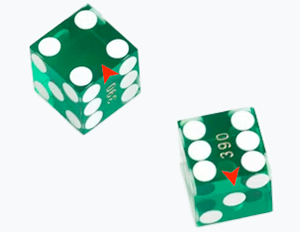
The Physical Standards of Casino Dice
Beyond just how they look, casino dice are designed with rigorous precision:
💎 Translucency
They're clear, so you can see through them. Why? To prevent tampering or loading. If someone gives you opaque dice at the craps table, you should hand them back and then immediately sanitize your hands.
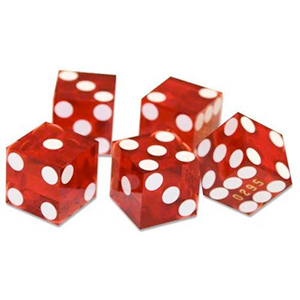
⚖️ Flat, painted dots (not indented)
Those classic little indented pips? Forget them — that's for children's board games. Casino dice have perfectly flat surfaces with painted dots. Why? Because digging holes for the dots would mess with the balance. The last thing you want is the 1 face landing on the felt more than it should just because some designer didn't understand basic physics.
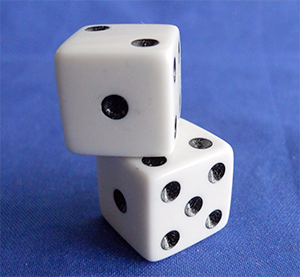
📐 Sharp, square edges
Casino dice have razor-sharp corners, not the rounded edges of your friendly neighborhood Yahtzee set. You can (and should!) be able to spin one like a miniature fidget spinner by pinching two opposite corners.
Can you spot what's wrong? Can you identify the Kosher dice?
So, how's your eye for valid dice? Care to test your skills? Here's a mixture of correctly and incorrectly illustrated dice. Can you tell which ones are invalid and why?
Die 1: 1/2/5
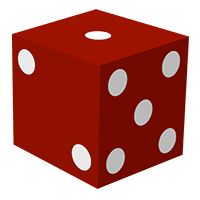
Die 2: 6/4/3
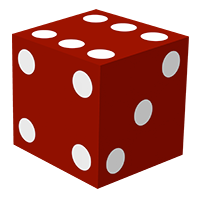
Die 3: 6/5/3
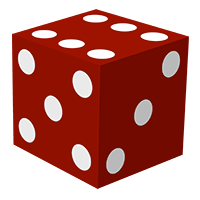
Die 4: 6/4/5
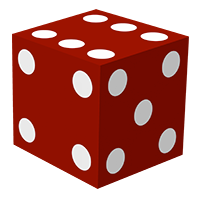
Die 5: 1/2/3

Die 6: 1/2/3
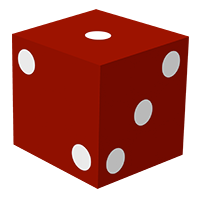
Why This Matters
Whenever I see malformed dice in artwork, marketing, or even from self-proclaimed dice “aficionados,” I absolutely cringe.
How can you claim to love dice and not know what real dice are supposed to look like?!
Even the factory-made dice that come bundled with Monopoly respect these rules! It's frankly embarrassing when so-called "craps enthusiasts" post artwork featuring impossible dice that no real casino would ever allow on a table.
And now that you know these rules — well, you can't unsee it either.
Every off-kilter dot, every backwards face, every rounded corner you spot in an ad or design from this day forward… it'll jump out at you. And you're welcome.
So let's all do better, shall we? Respect the dice. Love the dice. Draw them correctly.
